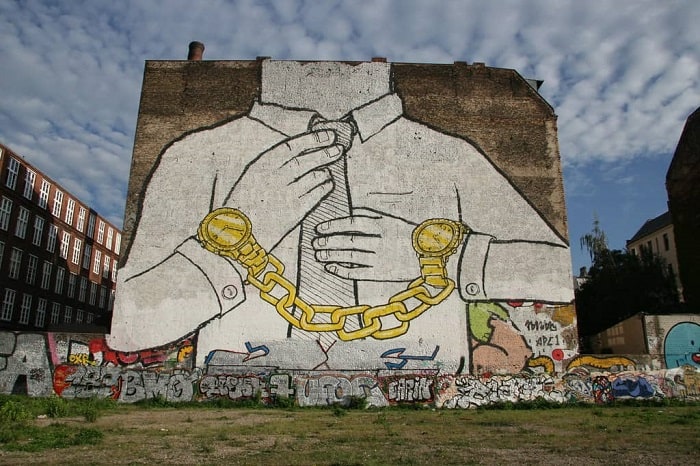Issues of curating street art (W2)
- Context of street art
Street art has a strong connection to the context of the town (social, political, cultural etc.) (like site-specific art?). Therefore, the identity of the work may be lost if it is separated from it. - belonging to street art
If the wall is cut out, it is necessary to negotiate with the owner of the building. - Illegality of street art
What is the concept of ‘street’? (W3)
Street culture shares space with disciplines as diverse as anthropology, art (both art history and visual arts), community social work, criminology/criminal justice, cultural studies, fashion, film studies, human geography, popular music studies and sociology. (Ross et al., 2020). The ‘street’, the space occupying these disciplines, is an independent entity where people live, move and sometimes work, as it refers to a specific place as a living cultural collective, and within the street boundaries a myriad of economic, political and social activities and interactions can be seen.
A process-oriented approach to street culture releases the essentialised, unitary or static notion of spatialised culture into its place, and instead understands street culture as a spatialised connection point between a broader series of flows, which can be diverse and vision of culture as dynamic (Massey, 2005). In other words, if the street can be described as a fluid and open public space, then it can be conceptualised as a ‘place (stay)’, as a space where people can stay, interact and develop a range of activities.
Massey, D. (2005). For Space. Thousand Oaks, Sage Publications.
Ross, J. I., Daichendt, G. J., Kurtenbach, S., Gilchrist, P., Charles, M., & Wicks, J. (2020). Clarifying street culture: Integrating a diversity of opinions and voices. Urban Research & Practice, 13(5), 525-539.


Comments
I like how you have engaged with textual sources and demonstrated independent research through a focus on curating street art. Good to also see referencing.
I wish that your blog was much more developed. For instance, you need to include a much greater degree of engagement with the course materials, texts, seminar content, fieldwork (e.g. gallery visits), images (referenced) etc. You need to be clear each week that you are addressing the weekly themes of the course, with a critical and comparative approach.
I wonder if you spent some time planning the structure of your blogs and making sure you are developing a narrative framework, which includes textual reflections and critical analysis, evidence of independent research, field reflections, group planning meeting reflections (including your own role in this), images, and referencing throughout – which should all be connected to the theme of that week in the course e.g. Week 2 Platforms and Organisations, Week 3 Artist-led culture/Artist-Curator.
*Can you please upload your blog for week 2. You should be looking at uploading the week 3 blog too.